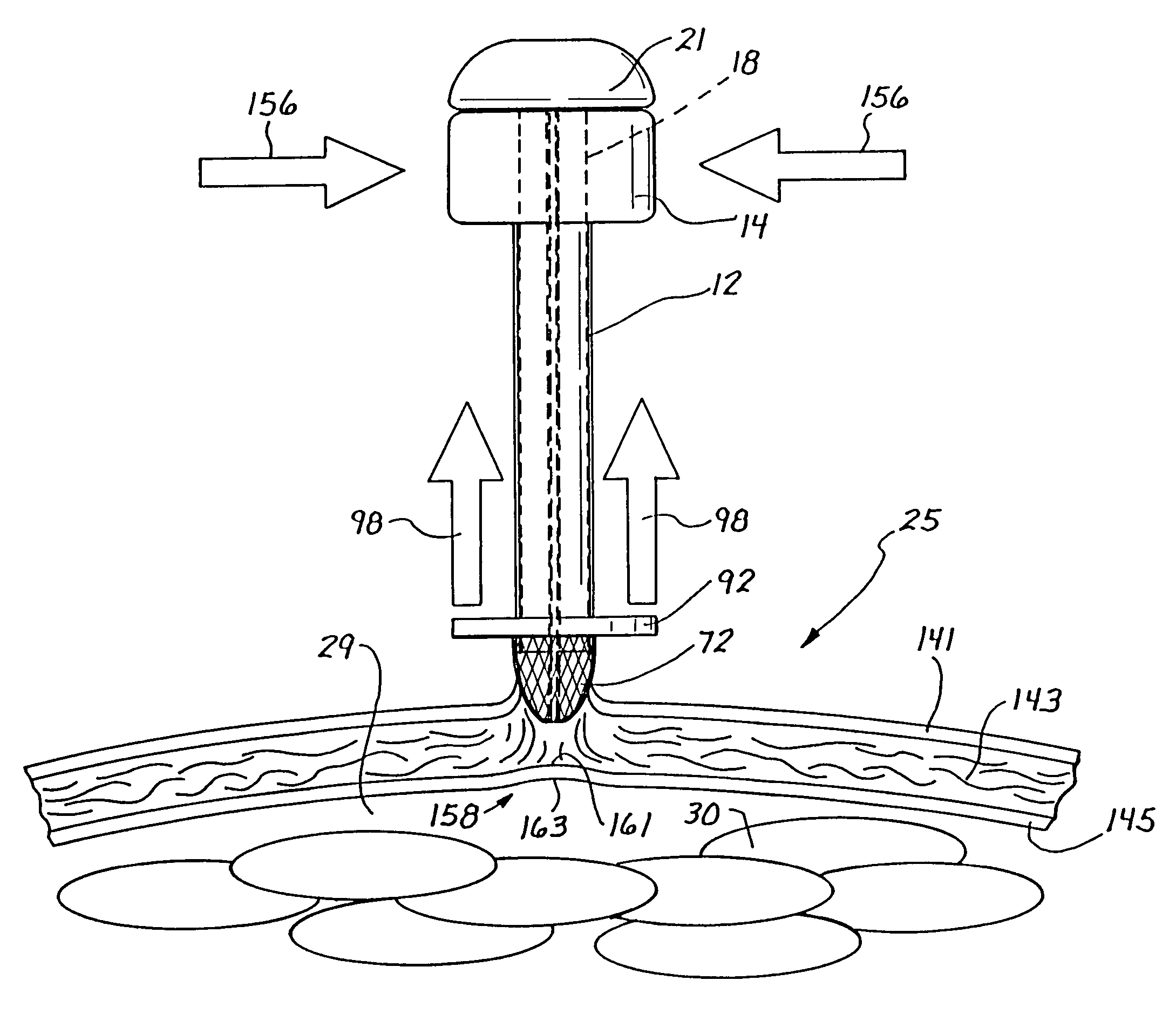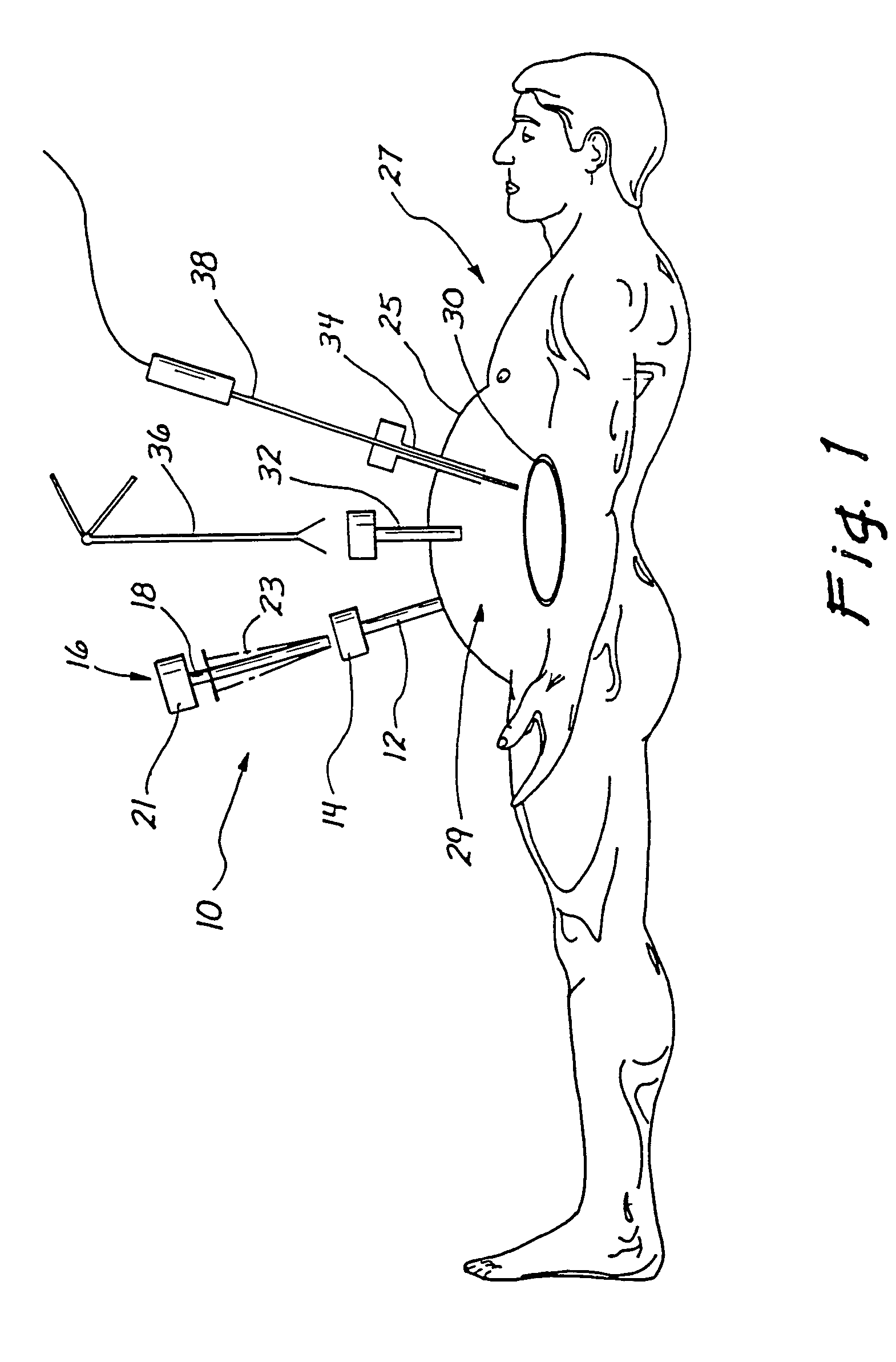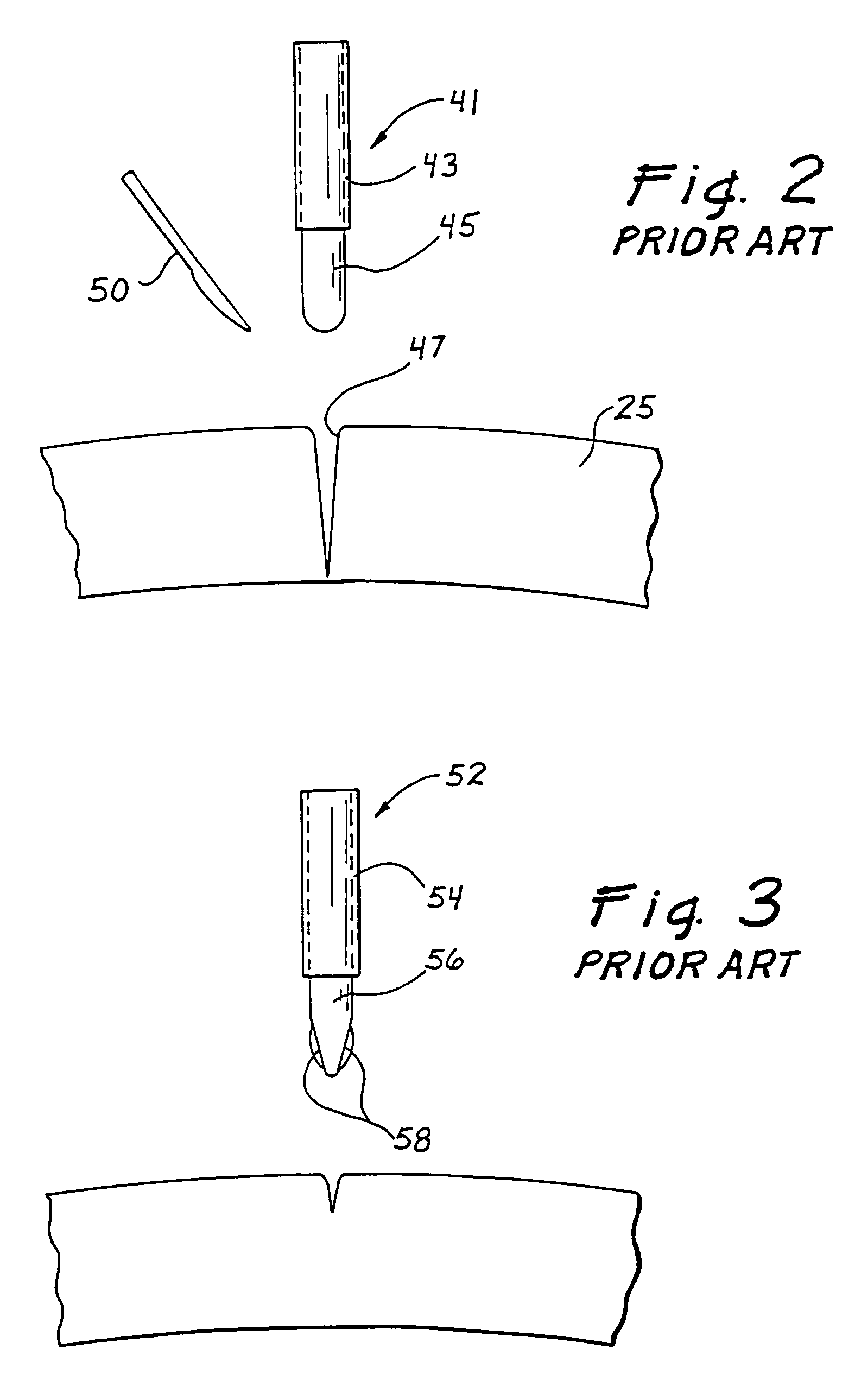Traction trocar apparatus and method
a technology of trocar and obturator, which is applied in the field of trocar systems, can solve the problems of damage to internal organs and structures, inconvenient and patient injuries, and achieve the effect of facilitating the removal of trocar cannulas from the body wall and reducing the radial force of the sleeves
- Summary
- Abstract
- Description
- Claims
- Application Information
AI Technical Summary
Benefits of technology
Problems solved by technology
Method used
Image
Examples
Embodiment Construction
[0068]A trocar system of the present invention is illustrated generally in FIG. 1 and designated by the reference numeral 10. The system 10 includes a trocar cannula 12 having a seal housing 14, and an obturator 16 with a shaft 18 and handle 21, and including a traction mechanism 23 of particular interest to the present invention. The obturator 16 is used in placing the cannula 12 across a body wall such as an abdominal wall 25, associated with a patient 27. In the case of the abdomen, the wall 25 defines an abdominal cavity 29 which includes many organs such as that designated by the reference numeral 30.
[0069]In less evasive laparoscopic procedures, multiple cannulas 32 and 34 are used to provide access across the abdominal wall 25 to facilitate surgical procedures within the abdominal cavity 29. By way of example, the removal of a gallbladder is typically accomplished with such a laparoscopic procedure. Initially, cannulas 12, 32 and 34 are placed across the abdominal wall 25, ea...
PUM
 Login to View More
Login to View More Abstract
Description
Claims
Application Information
 Login to View More
Login to View More - R&D
- Intellectual Property
- Life Sciences
- Materials
- Tech Scout
- Unparalleled Data Quality
- Higher Quality Content
- 60% Fewer Hallucinations
Browse by: Latest US Patents, China's latest patents, Technical Efficacy Thesaurus, Application Domain, Technology Topic, Popular Technical Reports.
© 2025 PatSnap. All rights reserved.Legal|Privacy policy|Modern Slavery Act Transparency Statement|Sitemap|About US| Contact US: help@patsnap.com



